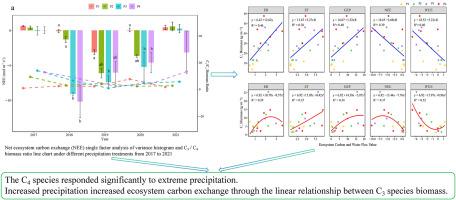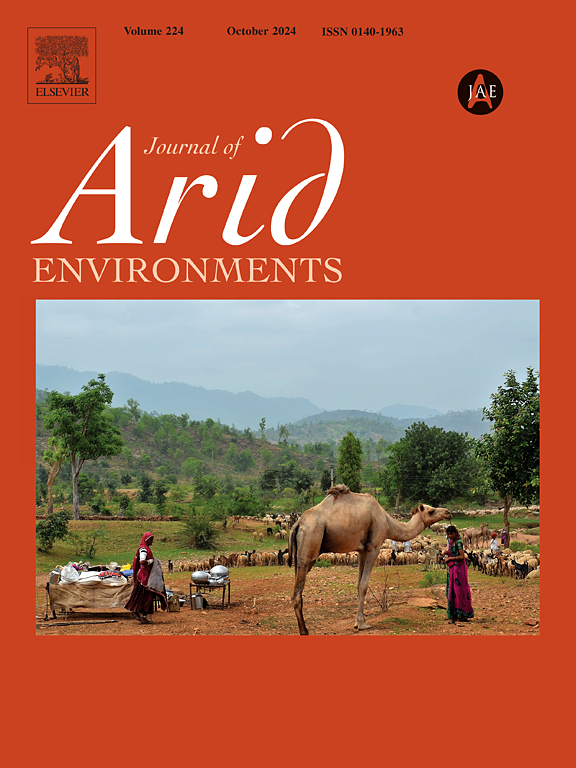长期降水操纵增强荒漠草原碳汇强度,差异驱动C3 / C4物种生物量:5年结果
IF 2.5
3区 环境科学与生态学
Q2 ECOLOGY
引用次数: 0
摘要
荒漠草原生态系统对气候变化非常敏感。虽然已知降水促进碳交换和生物量生产,但长期降水操纵下C3/C4物种动态和碳-水耦合机制的定量评估仍然有限。在内蒙古短花针茅荒漠进行了为期5年的降雨控制试验,采用减少50%降水、自然降水、增加50%降水和100%(加倍)降水4种处理。利用便携式光合系统Li-6400测量了每个地块的气体交换,并在生长季节(5 - 10月)测量了C3和C4物种的地上生物量。结果表明,降水增加促进了生态系统碳交换,在C3物种生物量线性增加的驱动下,降水量增加100%显著增强了碳汇容量。相反,干旱条件下C4树种的碳汇功能下降(降水减少50%)。这些结果表明,C3生物量主导碳水耦合,而C4物种缓冲干旱效应,共同稳定极端降水下的生态系统。本文章由计算机程序翻译,如有差异,请以英文原文为准。

Long-term precipitation manipulation enhances carbon sink strength and differentially drives C3 / C4 species biomass in a desert steppe: Five-year results
Desert steppe ecosystems are very sensitive to climate change. Although precipitation is known to promote carbon exchange and biomass production, quantitative assessments of C3/C4 species dynamics and carbon-water coupling mechanisms under long-term precipitation manipulation remain limited. Here, we conduct a five-year rainfall control experiment in the Stipa breviflora desert in Inner Mongolia, China, employing four treatments: 50 % reduced precipitation, natural precipitation, 50 % increased precipitation, and 100 % (doubled) precipitation. We measured gas exchange in each plot with a portable photosynthesis system Li-6400 and measured aboveground biomass of C3 and C4 species during the growing season (May–October). The results demonstrated that elevated precipitation enhanced ecosystem carbon exchange, driven by a linear increase in C3 species biomass, with a 100 % precipitation increase significantly strengthening carbon sink capacity. Conversely, the carbon sink function of C4 species declined under drought (reduce precipitation by 50 %). These findings suggest that C3 biomass dominates carbon-water coupling, while C4 species buffers drought effects, collectively stabilizing ecosystems under extreme precipitation.
求助全文
通过发布文献求助,成功后即可免费获取论文全文。
去求助
来源期刊

Journal of Arid Environments
环境科学-环境科学
CiteScore
5.70
自引率
3.70%
发文量
144
审稿时长
55 days
期刊介绍:
The Journal of Arid Environments is an international journal publishing original scientific and technical research articles on physical, biological and cultural aspects of arid, semi-arid, and desert environments. As a forum of multi-disciplinary and interdisciplinary dialogue it addresses research on all aspects of arid environments and their past, present and future use.
 求助内容:
求助内容: 应助结果提醒方式:
应助结果提醒方式:


